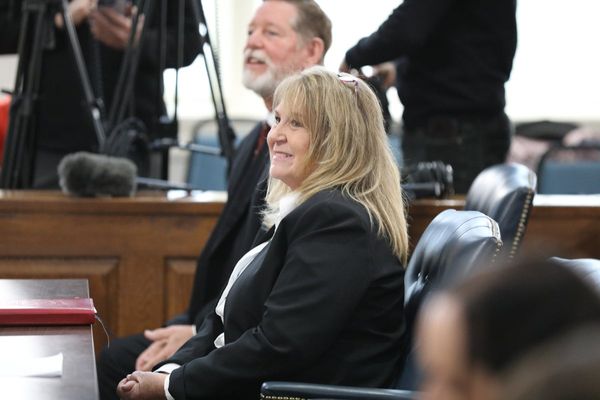CHICAGO — After a two-year spike during the pandemic and national outrage over police accountability, Chicago has begun to see a decline in homicides, as the Chicago Police Department works to correct crime trends to levels before the coronavirus and turmoil over the killing of George Floyd took hold.
“Our plans in 2020 were disrupted by civil unrest and the gun violence crisis as well as the global pandemic,” Chicago police Superintendent David Brown told the Tribune. “So we obviously had to address what was happening.”
Chicago had more than 800 homicides in 2021, one of the deadliest years in the last quarter-century. It was a year when the city joined national trends after Floyd’s killing by police in Minneapolis.
In 2022, the city had 689 homicides through Dec. 28, according to city data and figures from the Police Department.
Despite the 14% reduction, the total was still higher than it had been in 2019, the last year before COVID-19 took hold, when the city saw 496 killings through Dec. 28.
The number of shooting victims also was down, to 3,442 in 2022 from 4,339 in 2021, police said.
Brown credited police attention to detail at the block level for the improvement.
“I will say that the data-driven intelligence led community-policing strategy along with collaborating with other departments is our overarching strategy,” Brown said. “But more specifically, around the beat-policing model, really more precise, in policing to even smaller geography than beats — down to the block.”
Chicago still struggled with high-profile crime downtown, most notably with the killing of Seandell Holliday, 16, who was fatally shot near the The Bean sculpture in May. Marion Richardson, 17, was charged in the shooting, which prompted Mayor Lori Lightfoot to ban unaccompanied minors from visiting Millennium Park after 6 p.m. Thursday through Sunday.
“Since that order was out, we’ve not seen similar behavior. I think that the public dialogue that we had … really resonated with parents,” Brown said. “(It) resonated with other stakeholders who have programs for young people. And all of that working together really has diminished … that type of behavior for our young people.”
Among other key issues last year was street racing, generating viral videos and embarrassing moments for the department.
Brown said a task force created to stop street racing did have some effect as the city battled the issue across many districts. Brown credited the City Council for helping officers handle the trend.
“Council members created a new ordinance, giving us a little bit more tools in our toolbox to hold these people accountable,” Brown said. “Since then, really the last several months, the ordinance along with our task force had been very effective. We hadn’t seen as much even before the weather turned and we were able to tow more cars. We were able to identify more vehicles on video that we could hold accountable.”
Chicago also struggled with crime on public transportation, leading to police promising to boost efforts to make the CTA safer. Brown said that despite the headlines, CTA crime has been lower than it was before the pandemic, and has been on the decline.
“We have to sustain that, which may mean adding even more resources from both CTA and CPD as we continue to recruit more officers,” Brown said. “Fingers crossed, we’re starting to see a decline every month.”
Most recently, the department has struggled with mental health issues within its ranks. Three officers within a week died by suicide late last month, according to officials.
Brown said the department is up to 17 clinicians compared with three in 2020. All police districts should have a dedicated professional within months, he said.
“There’s a shortage of clinicians in this country. So it’s been much, much more difficult to hire clinicians than we thought,” Brown said. Some of the facilities are available off-site to make officers and their families more comfortable, the superintendent said.
“Officers are aware of the services that are available, which are available seven days a week, 24 hours a day through peer support and our employee assistance program, and finally, I would say we’re trying to build infrastructure around officer wellness,” he said. “Meaning we have created quiet rooms — those are spaces within the district, where officers can go and decompress during the shift, after the shift, anytime when they’re at work.”
____







